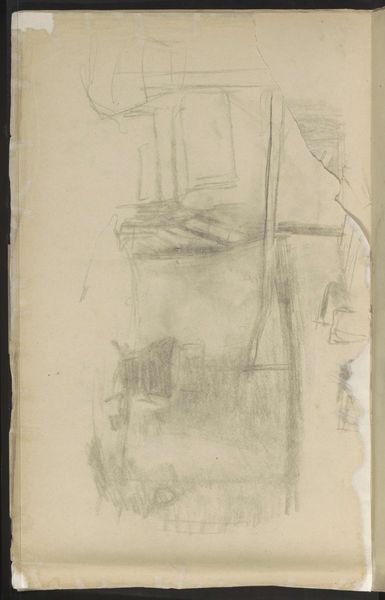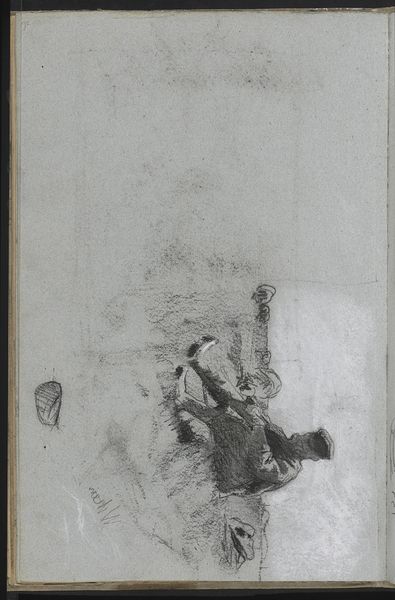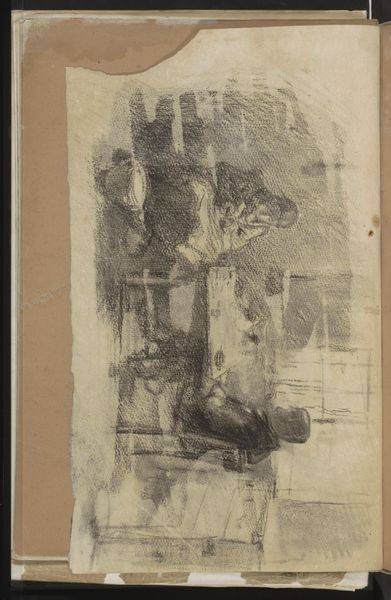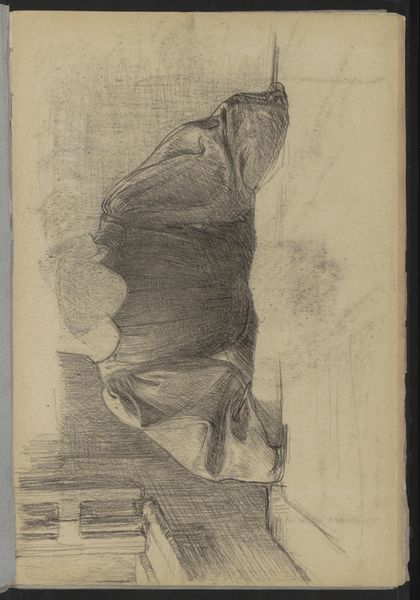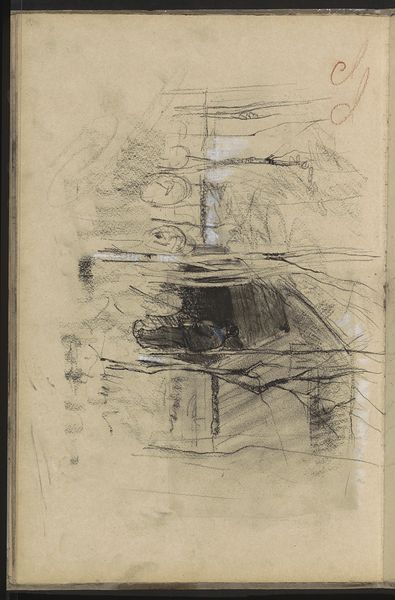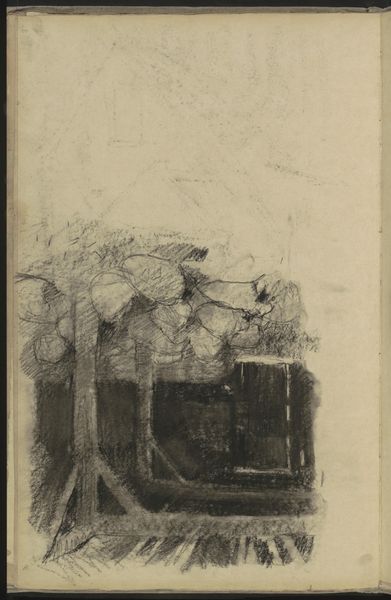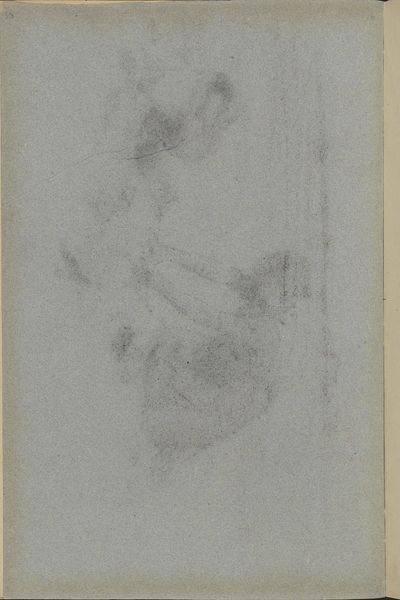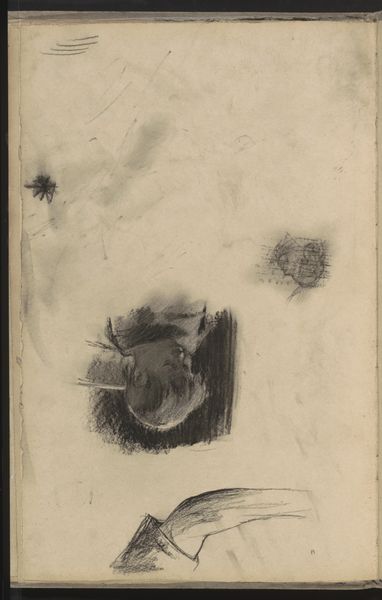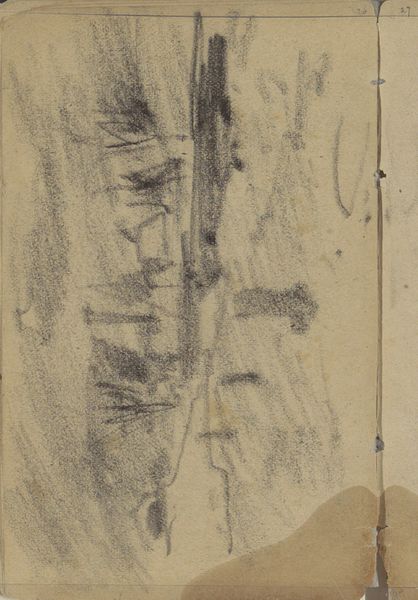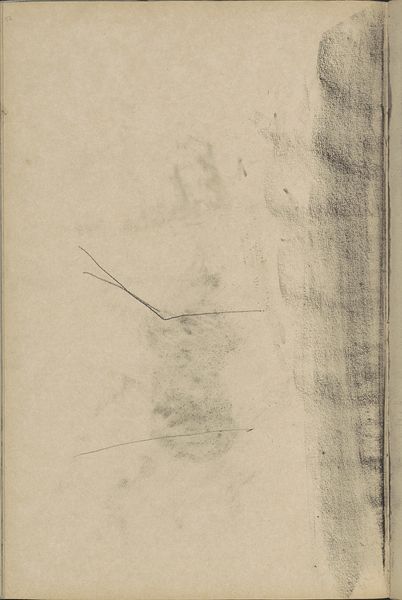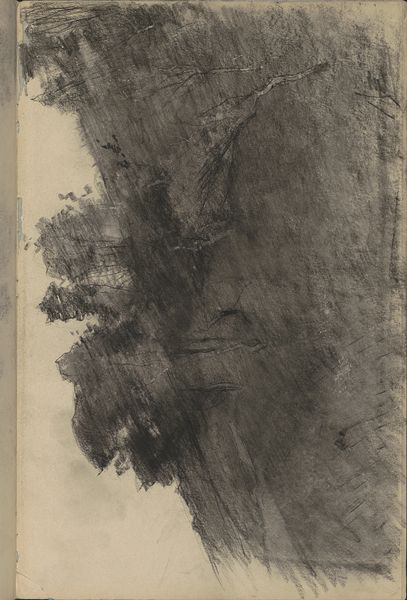
drawing, pencil, graphite
#
drawing
#
pencil sketch
#
landscape
#
pencil
#
graphite
#
sketchbook drawing
#
watercolor
Copyright: Rijks Museum: Open Domain
Editor: This is "Landschap," a landscape drawing by Willem Witsen, dating from around 1884 to 1887. It's made with pencil and graphite, and held at the Rijksmuseum. It's such a delicate drawing, but also somehow moody. What stands out to you about it? Curator: This drawing encapsulates the artistic transition happening at the time, particularly how landscape art was being reimagined in relation to urban expansion. The quick, almost journalistic, quality suggests it might be a study, recording observations on site. Think about how the Industrial Revolution was altering the Dutch landscape. How might the act of sketching, quickly capturing a scene, be a way of responding to these rapid changes? Editor: That's interesting – a quick sketch as a kind of preservation? I hadn’t thought of it that way. I just saw it as a preparatory piece. Curator: Precisely. Also consider the role of the Rijksmuseum itself. Museums were increasingly defining national identity, determining what aspects of culture were worthy of preservation and display. Was Witsen aware of his potential audience, perhaps sketching with an eye toward future exhibition? These institutions played a crucial role in shaping artistic careers. Editor: So, you're suggesting that the very act of creating this “sketch” and preserving it could be a statement in itself about what's valuable? Curator: Absolutely. It’s about considering the interplay of artistic creation, cultural institutions, and the changing social landscape. It moves us beyond just admiring the technique. Editor: This gives me a new way to consider art's place in broader social and political structures. Thank you. Curator: It's a process of continual questioning – of art, the artist and ourselves. It highlights that art does not exist in a vacuum, but reflects the spirit of its age.
Comments
No comments
Be the first to comment and join the conversation on the ultimate creative platform.
